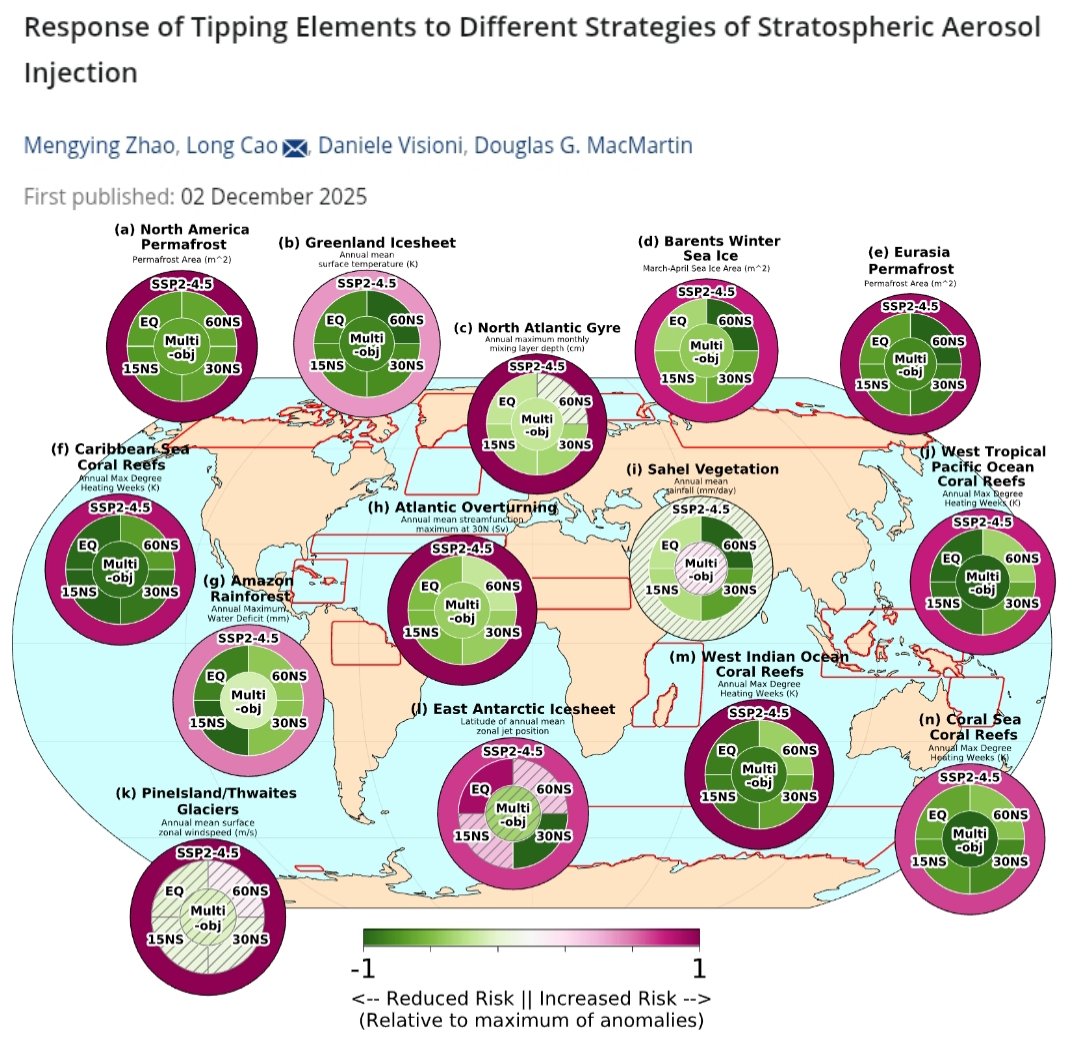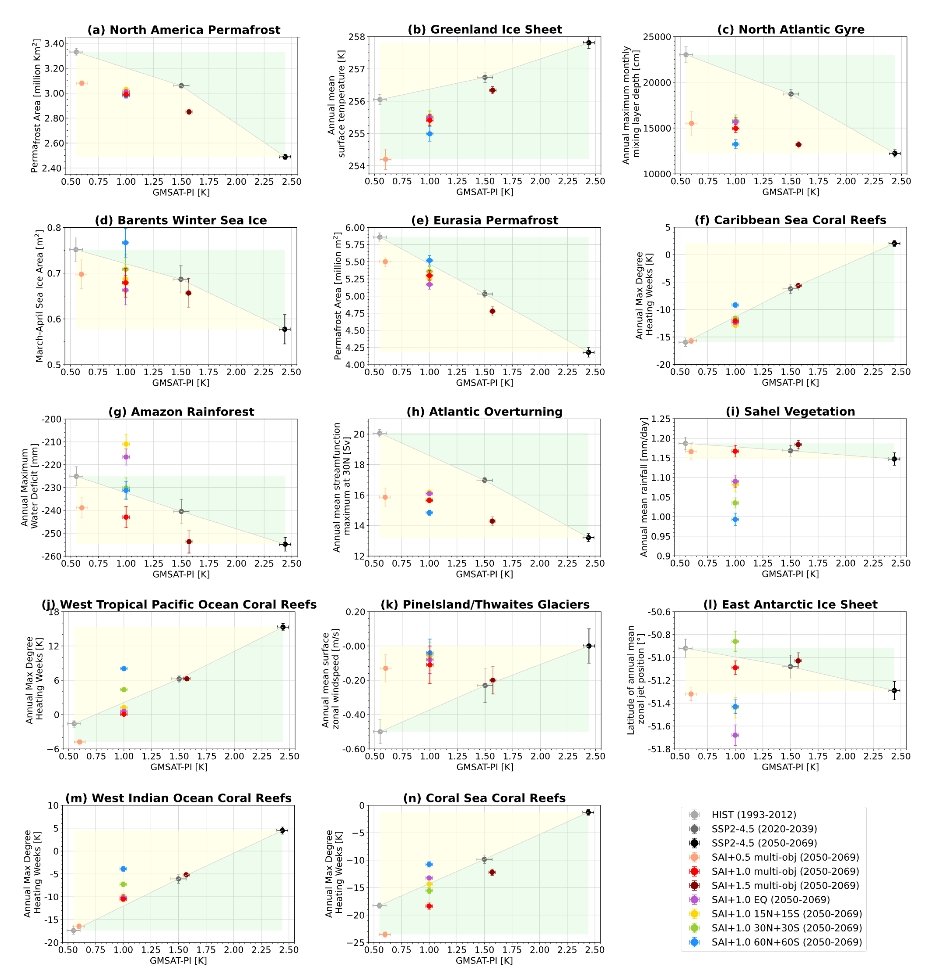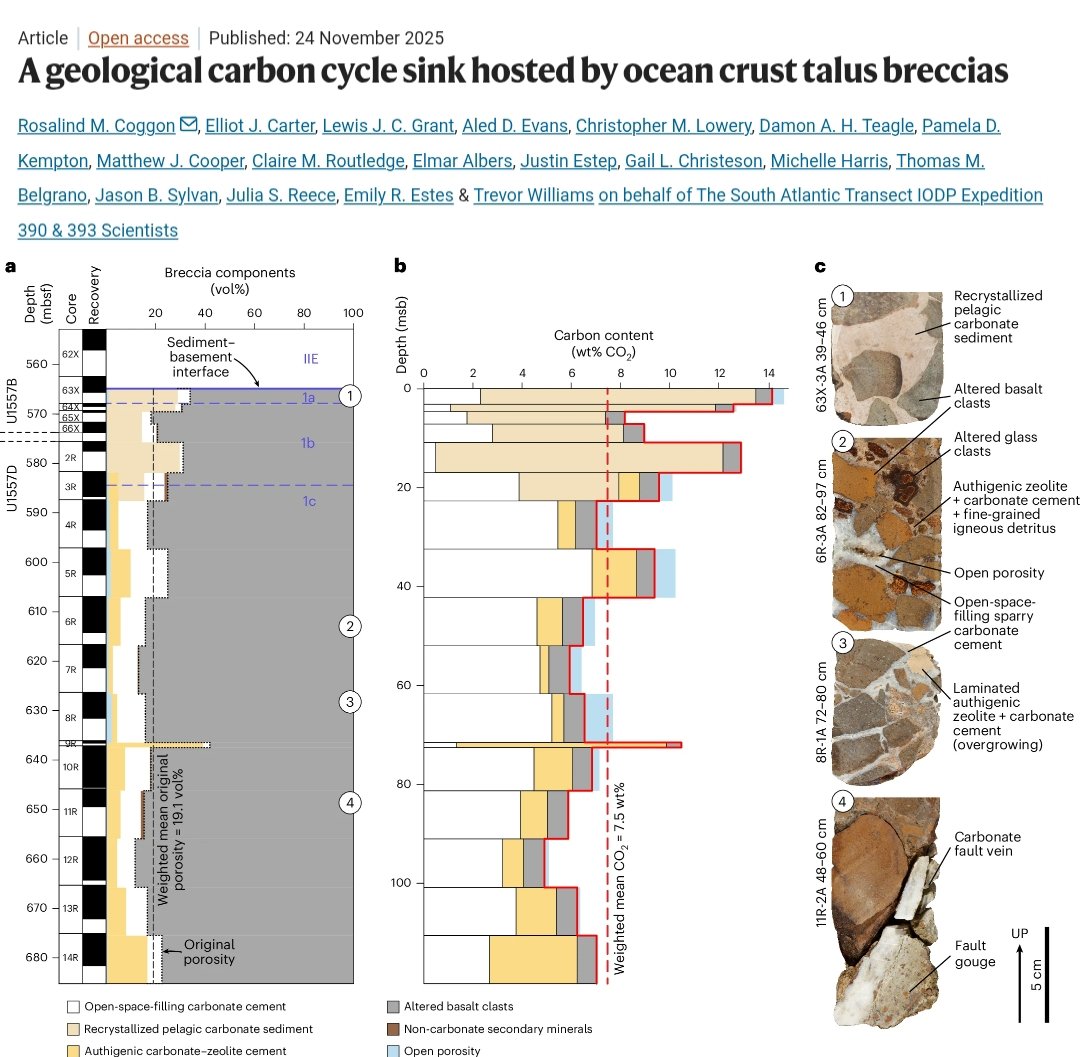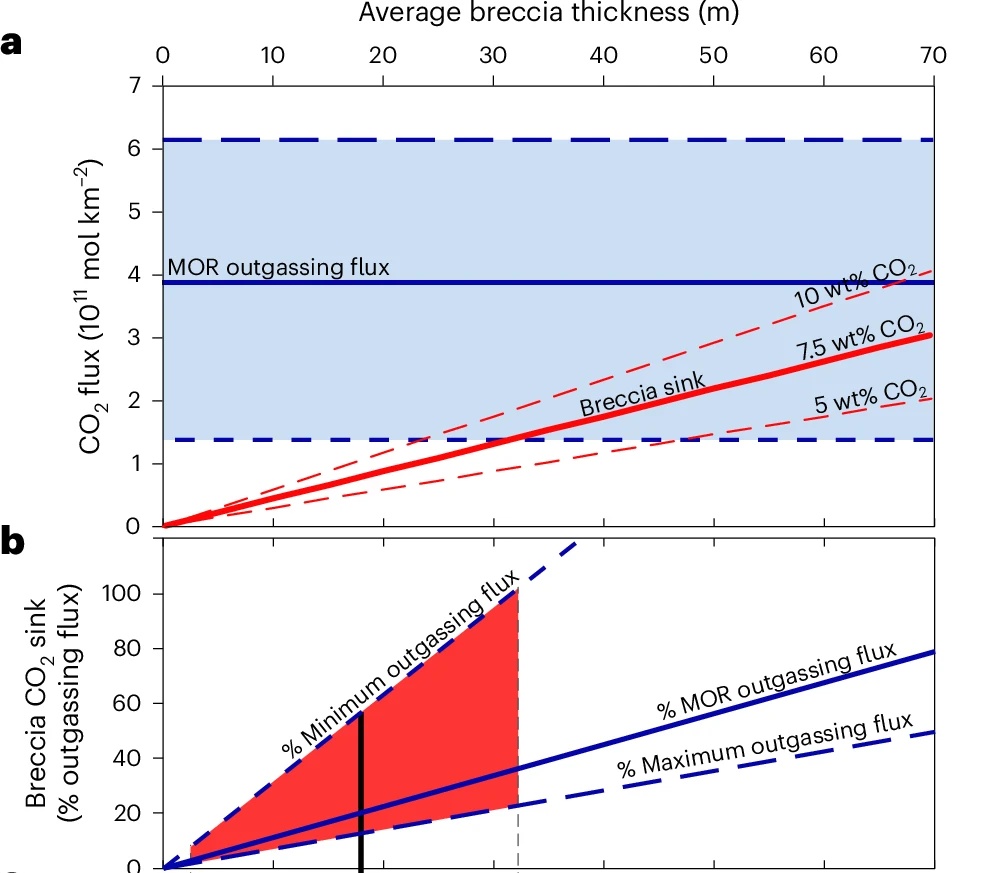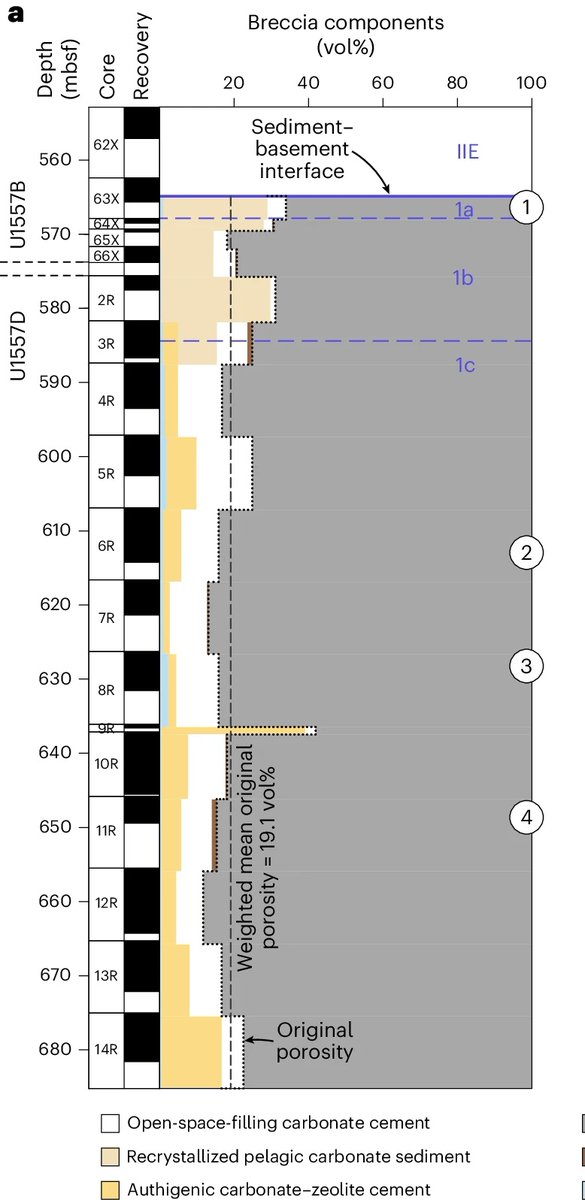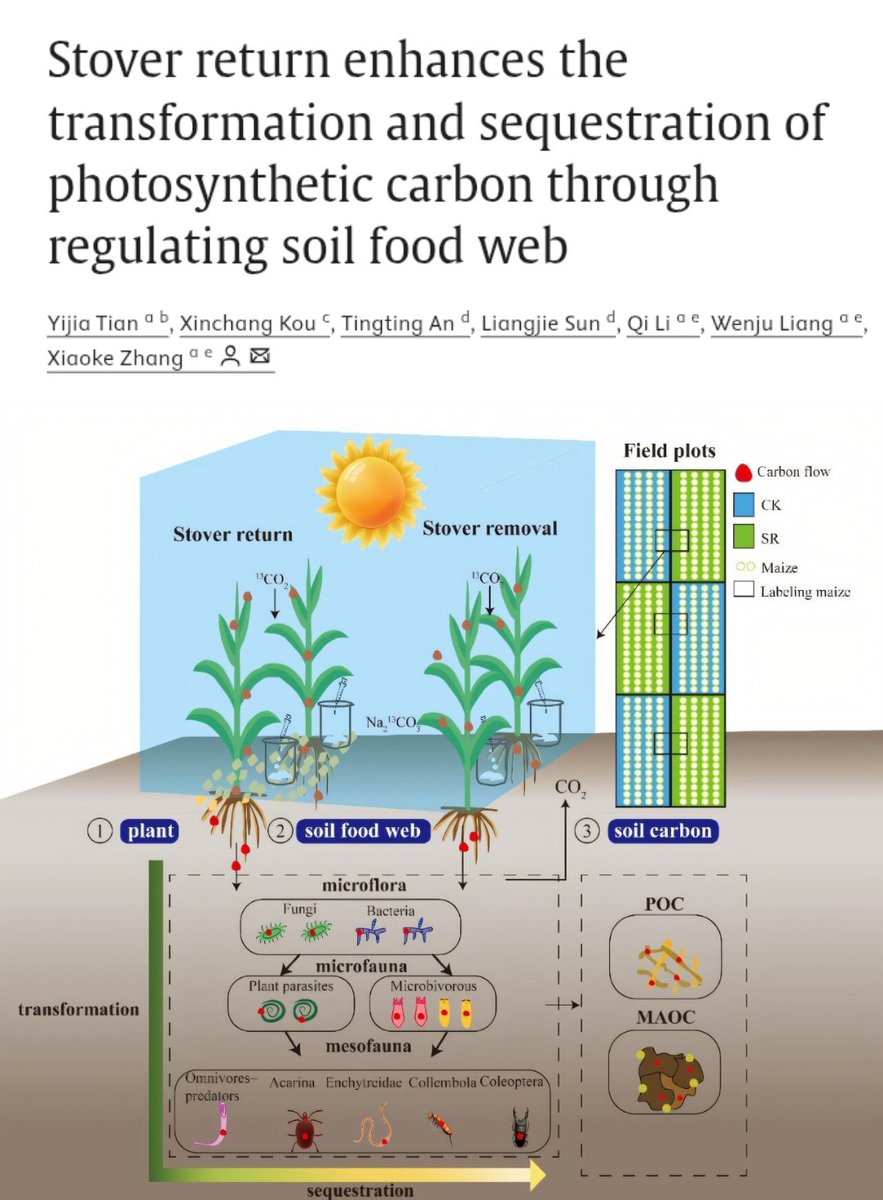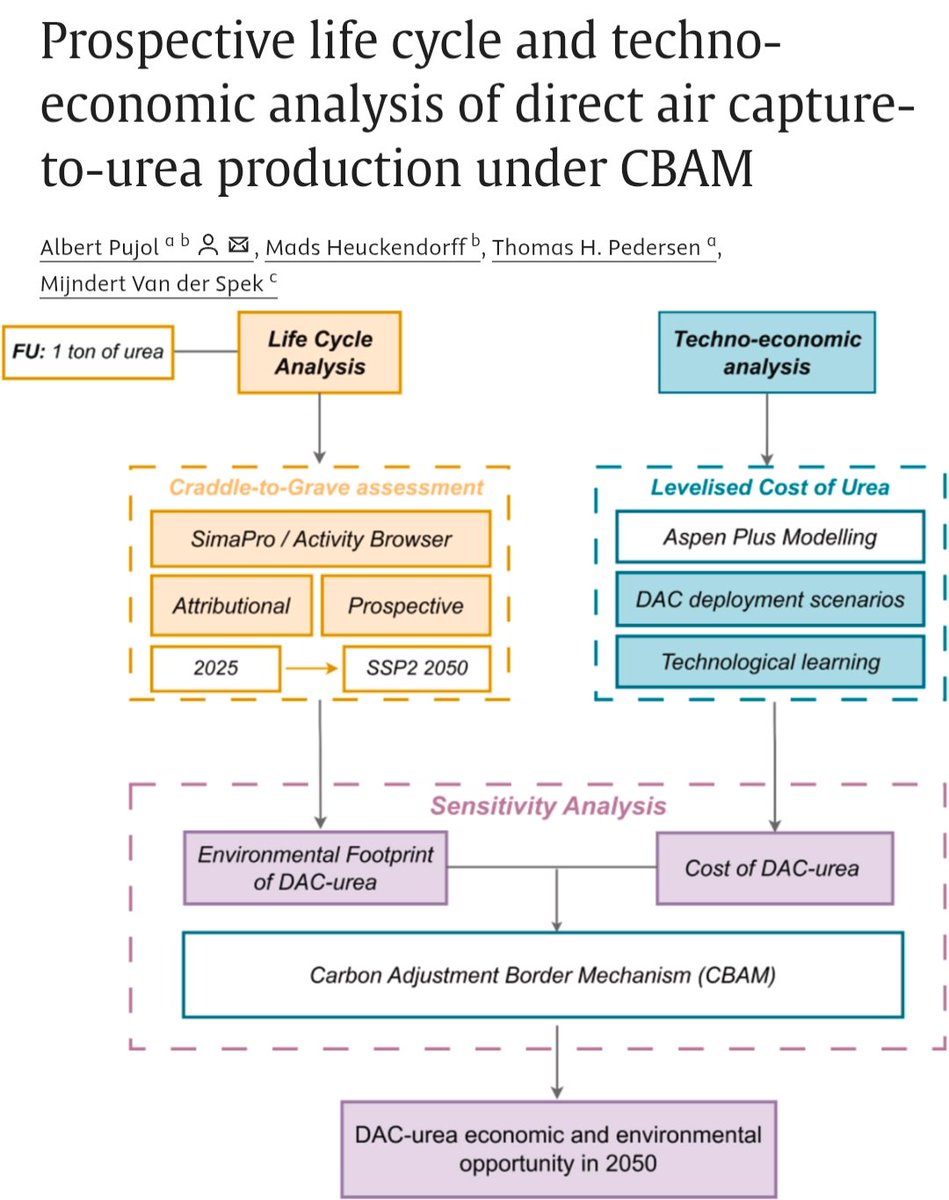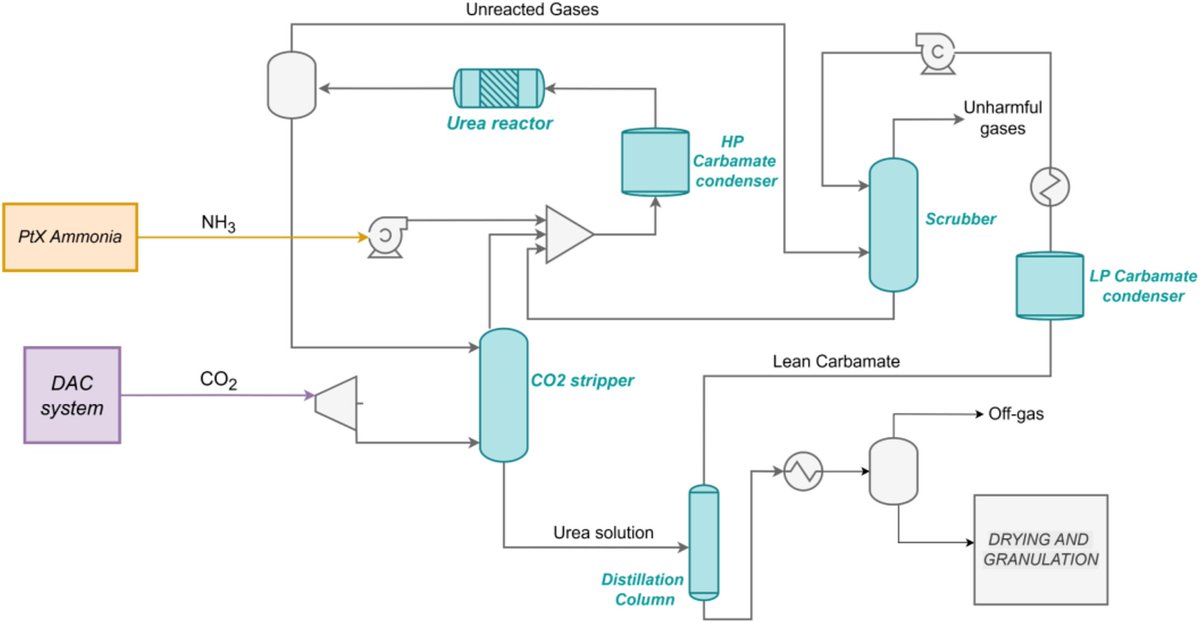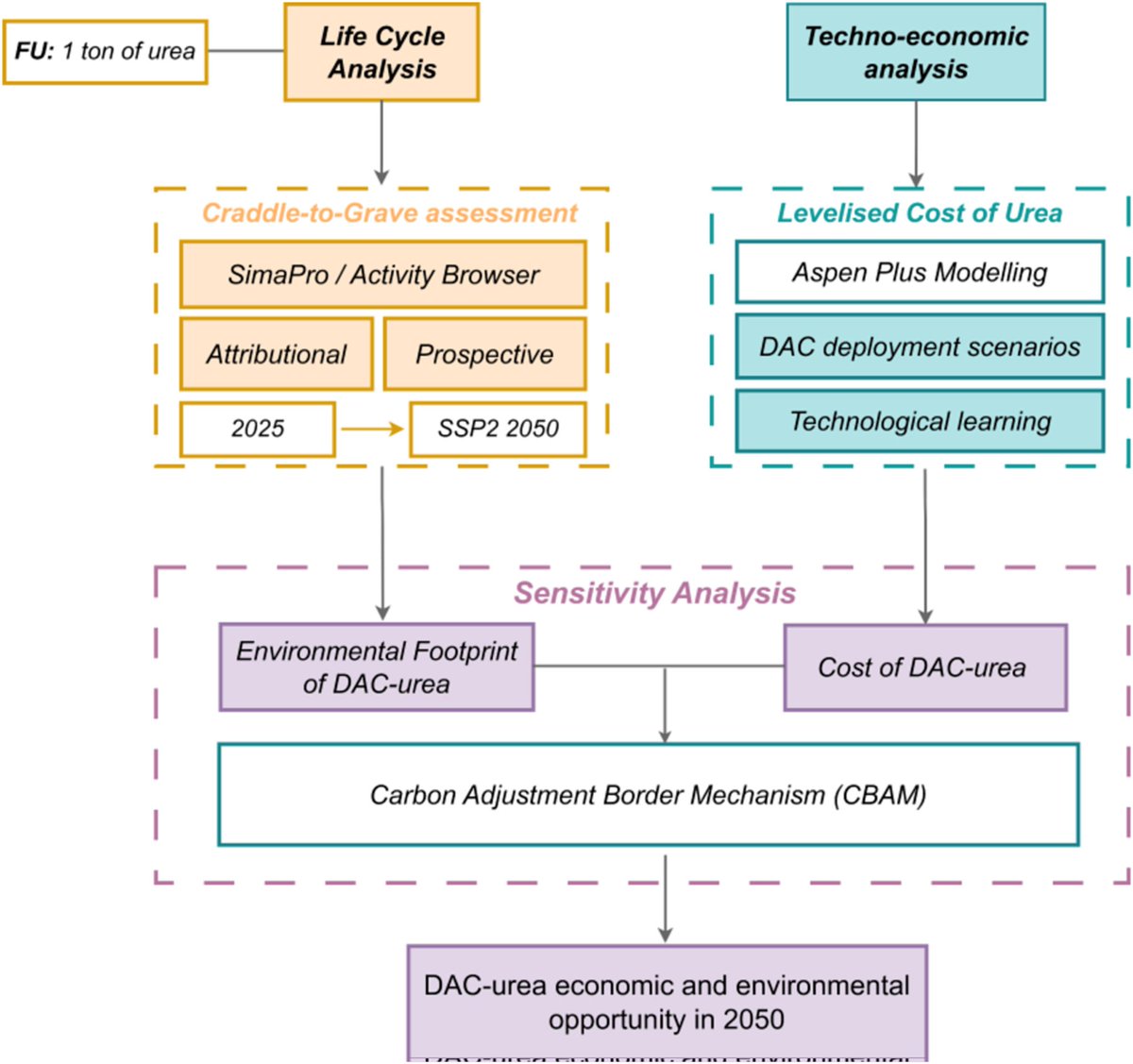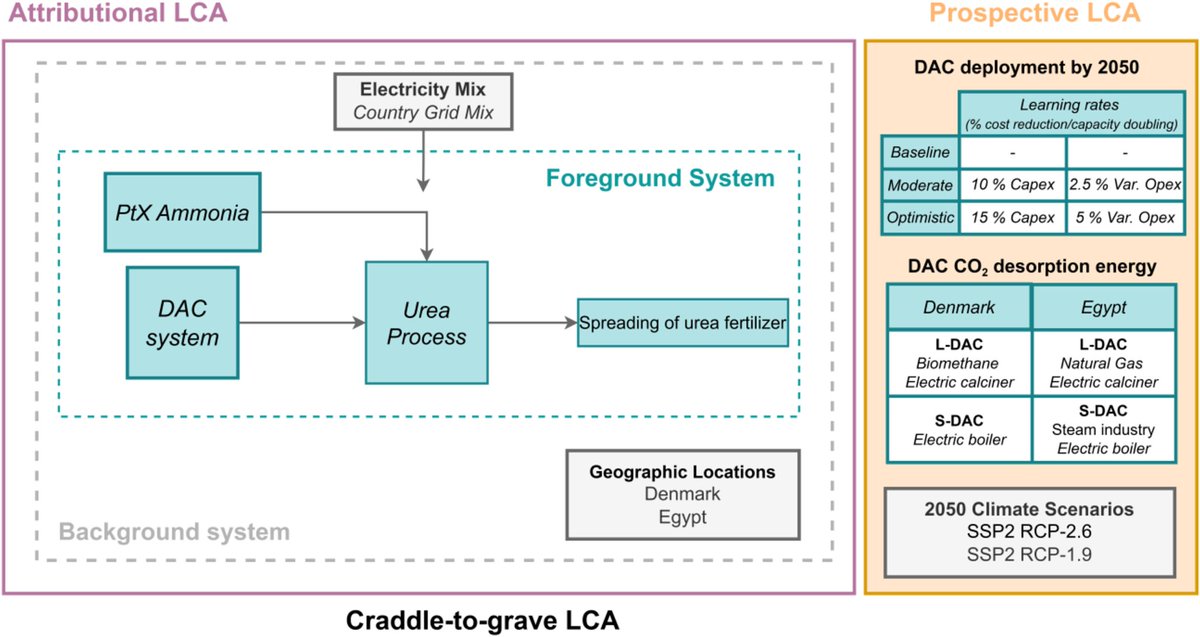🚨NEW STUDY🚨
Scientists investigate “the potential impact of #StratosphericAerosolIntervention (#SAI) on the spatiotemporal behavior of large-scale climate teleconnection patterns using simulations from the CESM1 & CESM2).”
🧵1/10
Scientists investigate “the potential impact of #StratosphericAerosolIntervention (#SAI) on the spatiotemporal behavior of large-scale climate teleconnection patterns using simulations from the CESM1 & CESM2).”
🧵1/10

“The leading empirical orthogonal function of #SST anomalies indicates that #GHG forcing is accompanied by increases in variance across both the North Atlantic (i.e., AMO) & North Pacific (i.e., PDO) and a decrease over the tropical Pacific (i.e., ENSO),” researchers inferred.
2/
2/

“However, #StratosphericAerosolInjection (#SAI) effectively reverses these global-warming-imposed changes.”
3/10
3/10
“The projected spatial patterns of SST anomaly related to ENSO show no significant change under either global warming or #StratosphericAerosolInjection (#SAI).”
4/10
4/10

“In contrast, the spatial anomaly pattern changes pertaining to the AMO (i.e., in the North Atlantic) and PDO (i.e., in the North Pacific) under global warming are effectively suppressed by #StratosphericAerosolInjection (#SAI).”
5/10
5/10

“For the AMO, the low contrast between the cold-tongue pattern and its surroundings in the North Atlantic, predicted under global warming, is restored under #SAI scenarios to similar patterns as in the historical period.”
6/10
6/10

“The frequencies of El Niño and La Niña episodes modestly increase with GHG emissions in CESM2, while #StratosphericAerosolInjection (#SAI) tends to compensate for them.”
7/10
7/10

“All climate indices' dominant modes of inter-annual variability are projected to be preserved in both warming & SAI scenarios. However, the dominant decadal variability mode changes in the AMO, NAO, and PDO induced by global warming are not suppressed by #SAI.”
8/10
8/10

Read the scientific study entitled: "Changes in global teleconnection patterns under global warming and stratospheric aerosol intervention scenarios" here ⬇️
acp.copernicus.org/articles/23/58…
#StratosphericAerosolInjection
#SAI
9/10
acp.copernicus.org/articles/23/58…
#StratosphericAerosolInjection
#SAI
9/10
• • •
Missing some Tweet in this thread? You can try to
force a refresh








